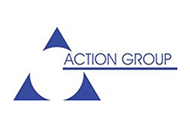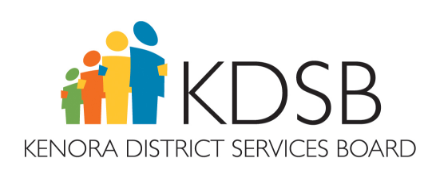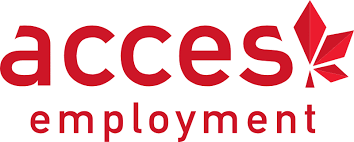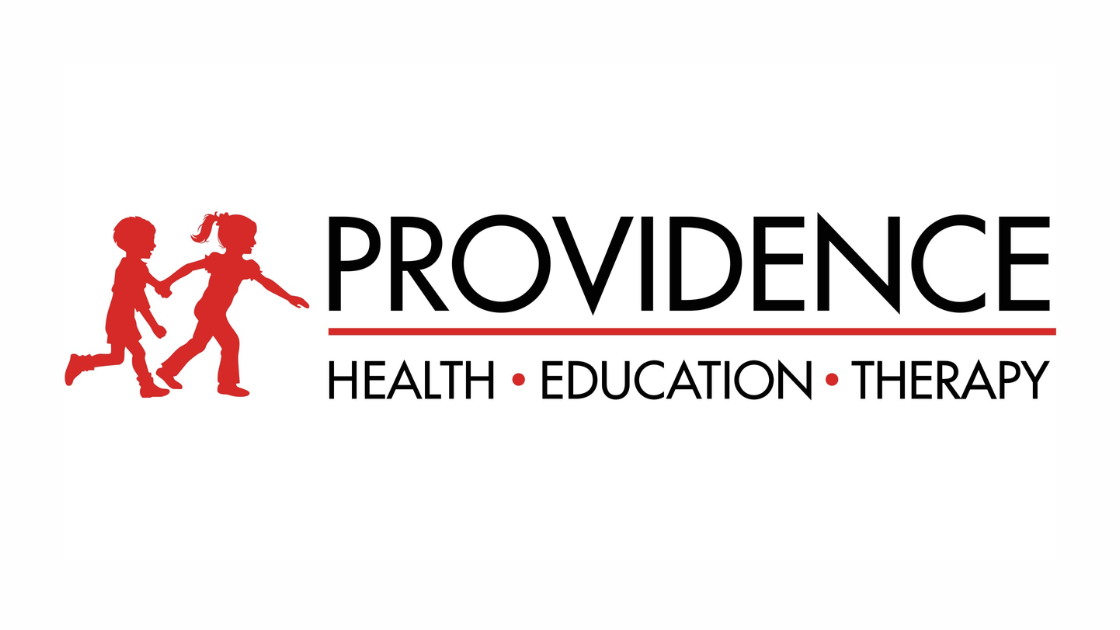Bri (Moderator):
Hello everyone, and welcome to our latest webinar: Fueling Nonprofit Growth—Eliminating Manual Processes for Greater Impact.
Before we get started, just a few housekeeping items:
- Cameras are accessible to moderators and speakers only.
- If you have questions throughout the webinar, please use the Q&A function. If you'd prefer to ask your question out loud, feel free to raise your hand—we’ll take questions at the end.
- Presenters, please mute yourself and turn your camera off when not speaking to avoid any background noise.
- And finally, we’ll send out a recording of this session within the next week.
Now, to get started, I’d like to introduce our presenters. First, I’ll hand it over to Gary.
Gary (Sparkrock):
Thank you, Bri. Hello everyone—very excited to be here.
Just a bit about me: I’m a Senior Account Executive at Sparkrock. I’ve worked in the ERP space for about a decade now, helping both nonprofit and for-profit organizations find the right HR and finance solutions. Over the past few years, I’ve focused exclusively on the nonprofit sector, which is what led me to join Sparkrock.
Bri (Moderator):
Thanks, Gary. Jen, over to you.
Jennifer Hume (Sparkrock):
Thanks, Bri. My name is Jennifer Hume, and I’m a Pre-Sales Consultant here at Sparkrock. I’ve been with Sparkrock for about three and a half years now. Before that, I was actually a customer for 12 years—11 of those years were with a nonprofit.
So, I like to say I get to do what I love: being in this product every day and showing organizations what it can do. I’ll be jumping in a bit later to walk through a demo.
Bri (Moderator):
Thank you, Jen. And now, our special guest from Microsoft—Henrik.
Henrik (Microsoft):
Thanks, Bri. Happy to be here.
My name is Henrik, and I’m part of Microsoft’s Tech for Social Impact team. I lead our global business applications work in the nonprofit space. Looking forward to the conversation today.
Bri (Moderator):
Thanks, Henrik.
Here’s what we’ll cover today:
- We just wrapped up introductions.
- Gary will give a quick overview of today’s topic.
- Then Henrik will dive into Microsoft’s role in supporting nonprofits.
- We’ll walk through some of the challenges nonprofits face with manual processes in finance and HR.
- Then we’ll move into a demo, followed by live Q&A and closing.
Gary—over to you.
Gary (Sparkrock):
Thanks, Bri.
To start this conversation around nonprofits and manual processes, we need to acknowledge something that’s obvious to many of us: the nonprofit world is full of passionate people like you—committed to making the world a better place. You have a mission, a vision, and a strong desire to create positive change.
But here’s the reality: nonprofits are often strapped for resources. Like Mike Tyson said, “Everyone has a plan until they get punched in the face.” For nonprofits, that punch is usually the budget.
Most of the budget rightfully goes toward delivering on the mission—but that means what’s left for technology, operations, and systems is minimal. The result is often resource constraints and labor-intensive, manual processes. These processes hurt efficiency, introduce errors, and slow things down—reducing your ability to serve your community in the best way possible.
This is what we call the “nonprofit paradox.” You’re being asked to do more—but with fewer resources and outdated systems.
So how do we break that cycle? How can we eliminate those manual processes, improve efficiency, and still stay within budget?
The answer lies in technology. And when we talk about nonprofit technology, we have to talk about Microsoft and the work they’re doing to support nonprofits around the world. So with that, I’ll hand it over to Henrik—our expert from Microsoft.
Henrik (Microsoft):
Thanks, Gary.
Let’s talk about Business Central, the platform Sparkrock is built on. Microsoft made a strategic choice to keep Business Central broad and flexible—intentionally not industry-specific. That’s because while we have the reach and platform capabilities, we don’t always have deep vertical knowledge in areas like nonprofit, retail, or manufacturing. That’s where partners like Sparkrock come in.
Business Central is:
- Scalable and customizable to fit the unique needs of each organization
- Secure, running on Microsoft’s data centers with full compliance and enterprise-grade protection
- Seamlessly integrated, allowing users to connect tools like Outlook, Excel, and AI assistants directly into their finance system
And we’re making significant investments in AI across the board. That means tools like Microsoft Copilot are now embedded into Business Central—so users can streamline workflows, gain insights, and reduce manual effort inside the solution itself.
Sparkrock plays a critical role here. They bring the nonprofit-specific knowledge we don’t have. They understand things like fund accounting, grant reporting, requisition approvals—things that Business Central wasn’t originally designed for but can now support through Sparkrock’s extensions.
Here are a couple of real-world nonprofit examples using Business Central:
- World Wildlife Foundation Italy: Focused on improving financial reporting and creating more agile processes.
- A nonprofit in Spain: Highlighted Business Central’s flexibility and how it helped them automate workflows that used to be manual and fragmented.
You can explore more of these stories at microsoft.com/nonprofit.
If your organization isn’t yet registered as a Microsoft nonprofit, I encourage you to apply—it only takes a few days to get approved. And with that, I’ll hand it back to Gary.
Gary (Sparkrock):
Thank you, Henrik. Appreciate that great overview—and the real-world examples—on how Microsoft technology is helping nonprofits eliminate manual processes.
Before we get deeper into the topic of manual processes, I want to expand a bit on what Henrik just said about Business Central—and how Sparkrock fits into the picture.
Let me just share my screen here… there we go.
So over 20 years ago, we identified a big gap in the nonprofit tech market. Back then, there were very few purpose-built solutions for nonprofits—products were unsophisticated, or they were just retrofitted from business use cases.
That’s why we founded Sparkrock in 2003: to give nonprofits better tools to manage their operations.
From day one, we partnered with Microsoft, and today our solution is fully built on top of Microsoft Dynamics 365 Business Central. As you can see on the screen, our application lives inside the Microsoft Dynamics environment.
Now you might be wondering: What does Sparkrock actually add to the Microsoft ecosystem?
Here’s the short answer: While Business Central is a great, robust ERP solution, it’s designed primarily for for-profit organizations—companies focused on revenue, margins, and inventory.
But nonprofits are different. You typically have fewer revenue streams—grants, donations, government funding—and your focus is on how that money is spent. You need:
- Precise tracking of expenses
- Approval workflows
- Grant and project accounting
- Fund accounting
- Regulatory reporting
Standard ERP solutions just don’t come equipped with these nonprofit-specific tools. That’s why organizations using generic ERP often end up relying heavily on manual processes.
What Sparkrock does is bring the same level of sophistication you’d see on the revenue side for a business—and apply it to expense management for nonprofits.
Before Sparkrock existed, nonprofits had to choose between:
- Established ERP systems designed for businesses (but lacking nonprofit features)
- Niche nonprofit tools (that lacked stability, scalability, and modern infrastructure)
With Sparkrock, you don’t have to choose. You get the best of both worlds:
- Microsoft’s enterprise-grade cloud, AI investments, security, and seamless integration
- Sparkrock’s nonprofit-specific features, developed over two decades of hands-on experience
You can:
- Access your ERP anywhere, anytime, on any device
- Integrate with Outlook, Excel, Teams, and Copilot
- Leverage Microsoft’s continued investment in the Business Central platform
- Use reporting and approval workflows that are built for the way nonprofits actually operate
Now that you have a sense of who Sparkrock is and how we fit within the Microsoft ecosystem, let’s return to the topic of manual process challenges.
When we meet with prospective clients, we always take time to understand their current pain points. And while every organization is unique, we hear the same issues again and again.
Let’s take a look at a few of the most common ones.
Gary (Sparkrock):
Let’s take a closer look at some of the most common manual process challenges we hear from nonprofits. These are the top five issues organizations bring to us during discovery calls:
- Financial Reporting
Many finance teams struggle to pull together reports from disconnected systems—accounting software, spreadsheets, payroll, bank statements. Reconciling that data is a huge effort. And because the data is often outdated, it’s hard to spot discrepancies or make timely decisions.
- Budgeting
Budgeting is a collaborative process, but in many cases it’s handled manually. Program managers and HR staff send spreadsheets back and forth, sometimes over multiple email threads. It’s hard to track revisions and feedback. And because real-time visibility is lacking, non-financial staff often overspend without knowing it.
- Employee Reimbursable Expenses
We often see organizations where staff submit expenses via email or paper forms, often without any consistency. Finance teams then manually review and categorize each expense to ensure it aligns with policy. It’s time-consuming and error-prone—especially at scale.
- Purchase-to-Pay Workflow
When purchase requests and invoices are submitted via email or paper, it creates serious bottlenecks. There’s no clear audit trail, approvals are delayed, and it's hard to ensure compliance with donor restrictions or budget limits. Matching POs with invoices is a frustrating, manual process that increases risk.
- Credit Card Reconciliation
Matching credit card transactions to receipts takes up valuable time—especially when there are multiple cards and a high volume of transactions. AP teams often spend hours chasing down receipts and following up with staff.
All five of these are:
- Labor-intensive
- Time-consuming
- Prone to error
- Disruptive to timely decision-making
What could be simple and fast with the right system instead becomes a drain on your resources.
So, let’s hear from you.
If you had a magic wand and could eliminate just one of these manual processes, which would it be? We’re going to launch a poll now—please take a moment to vote.
Bri (Moderator):
The poll should be up! You might need to check the chat window.
All right, I see responses coming in already. Looks like a close race between financial reporting and credit card reconciliation. I was tempted to include “all of the above,” but you only get one magic wand—so choose wisely!
We’ve got about 13 responses so far. Financial reporting and credit card reconciliation are leading, while budgeting, reimbursable expenses, and purchase-to-pay workflow are tied for last.
Thanks, everyone, for sharing your input.
Gary (Sparkrock):
Really appreciate that—thank you for participating.
Now that we’ve seen your responses, I want to bring in Jennifer. As someone who’s worked in nonprofit finance leadership and now supports our clients at Sparkrock, do these results reflect your experience? And how would you approach solving them?
Jennifer Hume (Sparkrock):
Absolutely, Gary. These are challenges I hear about constantly—from both our customers and prospective clients.
In fact, the demo I’ve prepared today will touch on three of those top pain points:
- Financial reporting
- Budgeting
- Purchase-to-pay workflow
So if you’re ready, I’ll go ahead and share my screen.
Gary (Sparkrock):
Yes—go for it.
Jennifer Hume (Sparkrock):
Great, thanks.
As Gary mentioned, Sparkrock offers many tools that help nonprofits eliminate manual processes. One that makes a huge impact is the Department Manager Role Center. This single feature supports better financial reporting, smarter budgeting, and more efficient purchase-to-pay management.
We covered role centers in a previous webinar—Wendy did a great job breaking down the different options. (Bri, if you're still on, maybe we can drop the link in the chat for folks.) But just to recap: Sparkrock comes with around 25 different role centers, each tailored to a specific job function—from finance managers to department heads.
Today, I’m focusing on the Department Manager Role Center, which is designed for program or cost center managers. These users often need access to detailed financial information—but only within their department or program.
Here’s why this matters:
In my previous role at a nonprofit, our month-end process looked something like this:
- It took two weeks to close the books
- Then the finance team spent another week slicing and dicing reports by department
- Reports were emailed as PDFs to program managers
- Managers made decisions based on outdated data
It was slow, manual, and inefficient.
With the Department Manager Role Center, that entire process changes.
Here are the three biggest benefits:
- No more manual reporting – Department managers get real-time, self-serve access to financial data
- Budget oversight is improved – Managers can track and manage their own budgets
- Finance workload is reduced – Fewer emails, fewer one-off requests—finance can focus on strategy
Let me walk you through a live example.
I’m now logged in as a department manager. My access is restricted to just the IT department—so I only see data relevant to my role. Right here on the dashboard, I can see:
- Budget
- Commitments
- Encumbrances
- Actuals
- Remaining available budget
Each of these numbers is clickable—so I can drill down into encumbrances, for example, and see which purchase orders are driving those figures.
Jennifer Hume (Sparkrock):
Let’s continue with the demo.
What you’re looking at now is an income statement view for my IT department. You can see:
- Revenues
- Expenses
- Budgets
- Commitments
- Encumbrances
- Actuals
I can drill down into any of these data points—even into source documents like posted purchase invoices. If I click through, the system will show me only what I’m allowed to see. For example, I may see only certain lines of an invoice due to security filters—which is great for role-based permissions and data security.
Now, while proactive budget tracking is great, not every manager checks their budget before submitting a requisition. So we also support reactive budget checking.
Let me show you how that works.
Let’s say a program manager is ordering some supplies. I’ll create a purchase requisition for 10 packs of markers at $4.99 each. I enter my department code—it's the only one I can use based on my role.
When I verify the requisition, the system immediately flags a budget overage warning. It shows:
- Total budget
- What’s been spent
- Commitments and encumbrances
Here, I’m clearly over budget. At this point, I can decide to stop, or I can continue and trigger an approval workflow. The system will still display the warning, but I can move forward if policy allows.
We can also configure the system to:
- Block requisitions that exceed budget (hard stop)
- Trigger a second-level approval when a submission goes over budget
In summary, the Department Manager Role Center:
- Eliminates manual reporting by giving managers self-serve access to their financial data
- Streamlines purchase requisitions with built-in budget checks
- Reduces the burden on finance teams—no more endless emails asking for budget updates
- Offers both proactive and reactive budget control
This empowers managers to make faster, data-driven decisions while freeing up your finance team to focus on strategy.
Pre-Submitted Questions
Jennifer Hume (Sparkrock):
Before we open up the live Q&A, I want to address a couple of questions we received during registration.
Q1: What integrations does Sparkrock support?
Sparkrock is built on Microsoft Dynamics 365 Business Central, so we offer seamless integration with a wide range of third-party applications. This reduces the need for:
- Manual data entry
- Spreadsheet reconciliations
- Handwritten approvals
We support integrations through:
- Native Microsoft connectors
- Third-party integration tools
- Custom APIs
Sparkrock’s modern API suite allows for real-time data sharing between systems—ensuring better accuracy, automation, and analytics. This improves workflows across finance, HR, and operations so you can spend less time chasing data and more time delivering impact.
Q2: Can Sparkrock handle budgeting related to donations and expenditure planning?
Yes. Sparkrock’s budgeting module allows you to:
- Distribute budgets to individuals across your organization
- Track expenditures related to specific funding sources, including donations
- Set up multiple concurrent budgets, including donation-specific ones
Contributors can enter their portion of the budget, and an approver can review and finalize it. This ensures accurate tracking of how donated funds are spent—a crucial need for many nonprofits.
Live Q&A
Bri (Moderator):
Let’s move into the live Q&A. We had a few questions come in—Gary, I think one of them is for you.
Gary (Sparkrock):
Sure, let’s go!
Q: What role can AI play in nonprofit growth?
AI—like any technology—helps accelerate operations by saving time, reducing manual effort, and increasing accuracy. Whether it's automating reports, assisting with approvals, or providing predictive insights, AI helps nonprofits do more with less. Think of it as getting answers or actions in seconds, not hours.
Jennifer Hume (Sparkrock):
And to add to that—Sparkrock is bringing Microsoft Copilot into our finance platform this year! If you caught our last webinar, you’ll know it’ll allow users to ask their ERP questions in plain language—based on their permissions. It’s an exciting area we’re developing further.
Q: I know Microsoft Great Plains is retiring—do we need to move to Business Central first, or can we go directly to Sparkrock?
Gary (Sparkrock):
Great question. Microsoft Great Plains (and Dynamics SL) are reaching end-of-life. We don’t recommend building new integrations with those platforms.
Instead, you can move directly to Sparkrock 365, which is built on Business Central. You don’t need to migrate to Business Central separately—our platform includes it and adds nonprofit-specific enhancements. It’s a natural upgrade path from legacy systems like Great Plains or Solomon.
Q: Is Sparkrock just an enhancement, or is it a full accounting platform?
Gary (Sparkrock):
Sparkrock is more than just an add-on—it’s a full nonprofit ERP. That includes accounting, HR, payroll, scheduling, procurement, and budgeting. We provide a robust finance platform specifically tailored to nonprofit needs, built on top of Microsoft’s secure and scalable infrastructure.
Gary (Sparkrock):
To clarify—Sparkrock is not just an enhancement to Business Central. It’s a fully integrated ERP system that includes finance, procurement, HR, and payroll functionality.
Here’s how it works:
- Business Central provides the foundational Microsoft infrastructure—cloud hosting, security, scalability, AI, and integration.
- On top of that, Sparkrock adds a nonprofit-specific layer—with all the additional features nonprofits need for finance, HR, payroll, budgeting, and reporting.
Think of Sparkrock as the second layer: everything we build is designed with nonprofit complexity in mind. If you’d like a breakdown of how Sparkrock extends Business Central, I’d be happy to share that with you—just let us know.
And of course, if you have more questions after this session, we’re happy to sit down with you one-on-one.
Bri (Moderator):
We’ve got a couple more questions, and the next one is for Jennifer:
Q: Can department manager roles in Sparkrock be customized?
Jennifer Hume (Sparkrock):
Great question—yes, absolutely.
Customization is done through personalization, which lets each user tailor their role center without affecting others. I’ll share my screen again and show you how this works.
Here I’m in my role center, and I can adjust tiles and layout using the red chevrons. For example, I can move the Sparkrock Employee Self-Service tile into a more prominent position if it’s something I use often. I can also personalize dashboard boxes—again, I’ll only see what my role and permissions allow.
So yes—department manager dashboards are customizable based on user needs.
Bri (Moderator):
Awesome. Final question from the Q&A before we wrap up:
Q: Can financial analysis reports be exported to Excel?
Jennifer Hume (Sparkrock):
Another great question—yes, they can!
Let me show you. I’ll head back to the Department Income Statement for IT. Once I open the report, I can export it directly to Excel. You’ll see it opens cleanly, with all the formatting intact.
From there, you can analyze, pivot, or model your data however you’d like. This is a key feature, especially for users who prefer deeper analysis in Excel.
Q: We have a union payroll with over 300 pay codes. Can Sparkrock handle that level of complexity?
Jennifer Hume (Sparkrock):
Yes, we can.
We have several customers with complex union requirements—including multiple unions, hundreds of payroll codes, and detailed contract rules. Sparkrock’s HR and Payroll module is robust enough to handle high-volume, rule-based payroll.
Gary (Sparkrock):
The short answer is: yes.
Bri (Moderator):
That wraps up our Q&A!
Let me throw up one final slide. If you think of questions later, feel free to reach out to us:
📧 connect@sparkrock.com
🌐 Or use the contact form on our website.
A big thank you to Gary, Jennifer, and a huge thank you to Henrik from Microsoft for joining us today.
Have a great rest of your day—and we hope you enjoy the weekend ahead!

%20(3).png?width=150&height=150&name=Gary%20(2)%20(3).png)












